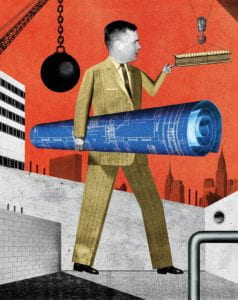Each Friday, the Wagner Planner editorial board will publish a news roundup of recent planning news. Topics range the gamut of urban planning concentrations, but will mostly be at the discretion of the editors.
Brendan’s Picks
Mobility on Demand (podcast)
“…explores the concept of a monthly mobility package that bundles together transit, bike-share, car-share, and ride services. Priced correctly, such a package could be significantly cheaper than owning a car when you add up insurance, maintenance, and all the other costs. As long as the package provides similar levels of convenience, people might be willing to give up their car altogether.” (SideWalkTalk)
That Scooter Ride is Going to Cost You a Lot More
“As cities have begun to regulate the services, the companies have been required to pay permit and ridership fees, they said. Additionally, there are fines associated with impounded scooters and capital costs to replace vandalized equipment or scooters that reach the end of their life span. Some cities have also begun to require companies to use geofencing technology to ensure greater control over their fleets.” (The Washington Post)

New York joins growing roster of cities that ban cars on crucial transit streets. Why not Philadelphia?
“Seeing all that free space on the normally congested thoroughfare has delighted New Yorkers, who have been dashing into the street for selfies. “I have never seen buses come one after another like this,” said Annette Chin, an Upper East Side resident. She was taking a crosstown bus for the first time in years to see if the busway was as fast as she heard. “The bus is actually moving,” she marveled.” (The Philadelphia Inquirer)

***BONUS***
Bringing Equity to the Forefront of Urban Planning
“Can city planners use their technical tools to share resources more equitably among residents? That was the radical idea proposed by one Midwestern planner during the height of the urban crisis — and it offers lessons for American cities today as they struggle with aging infrastructure and unaffordable housing.” (Shareable)
Mayelly’s Picks
One Hundred And Fifteen Years Ago, The New York City Subway Became Itself

Kids Raised in Walkable Cities Earn More Money As Adults

